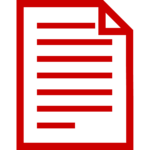This report grows out of one of the most successful assignments used in NC State’s English Department courses that prepare undergraduate engineering, management, and other scientific and technical students for the communication they will do in the workplace. The assignment asks students to interview someone who has a job they would like to have in five years about the writing and other communication tasks the job involves.
The students are usually astonished (and appalled) to discover in these interviews that technical and business professionals spend 20–30% of their time at work writing and another significant portion in high-stakes oral communication. Students often find themselves being lectured by an engineer or an accountant about how important writing is to their career, how damaging the consequences of poor communication are, and how important the student’s English course is.
Students write up the results of their interview and share them with each other, as well as with their instructors. Most of what they discover in these interviews confirms national survey results from the past 20 years. However, students are never astonished when they read these survey results in a textbook or hear about them in a classroom lecture. The impact of first-hand information from a role model they themselves have selected is far greater than a teacher or textbook can have.
This assignment is not only a successful teaching strategy; it can also be a valuable source of information for instructors and curriculum planners as they try to keep up with the changing practices and problems of the workplace. And when many students gather the same kind of information at the same time, we acquire information that has statistical power, as well as anecdotal richness.
We have harnessed the power of large numbers twice, during the spring semester of 1996 and spring semester 2001 for a five-year follow-up study. In both cases, faculty in the English Department coordinated their assignments so that the results of many interviews could be compiled and compared. This report is the result of our second collaborative effort among students, instructors, and the many working professionals who agreed to be interviewed.
Dr. Carolyn R. Miller
Professional Writing Program Director, 1995–2002


You must be logged in to post a comment.